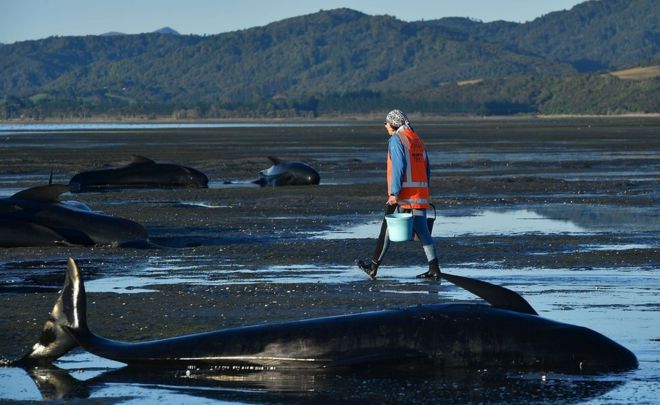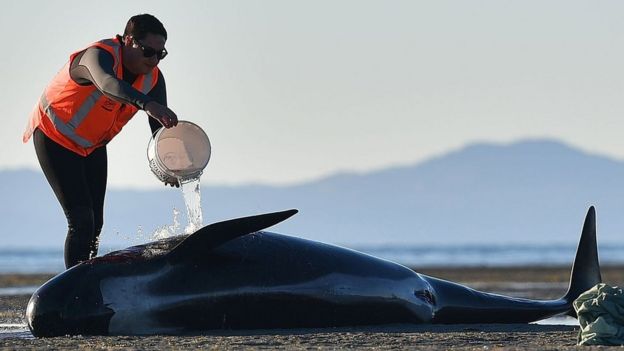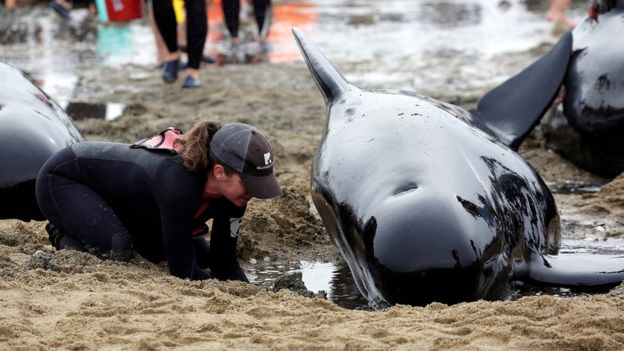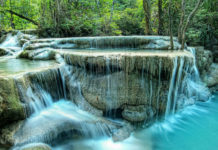
Each year locals from Golden Bay at the top of New Zealand’s South Island know to expect a whale beaching at a narrow strip of sand curving into the Cook Strait, known as Farewell Spit. Ben Collins looks at what makes the area so deadly.
Each year, according to the conservation group Project Jonah, around 300 dolphins and whales are stranded in New Zealand.
Many of these incidents occur at Farewell Spit, a thin arc of sand at the top of the South Island which separates a shallow bay from the open ocean.
Last week, more than 400 pilot whales became stranded on this 5km-long (three mile-long) stretch and, while some were saved by conservation officials and volunteers in a desperate rescue effort, most died.
The beaching occur in the summer months, according to Gary Riordan, who is 62 and has lived in the area for most of his life.

Dr Rochelle Constantine, a marine biologist at the University of Auckland, also says the shallow water around Farewell Spit is what causes the whales to beach.

Because the water becomes shallower gradually, the whales may not be able to detect the change using echo-location, in the same way they would a sudden rise in gradient, she says.
By the time they do realise, it’s often too late. The tide has already begun to run out.
While the shallow water and its effect on echo-location is the most likely reason the animals become stranded at Farewell Spit, Dr Constantine says pilot whales also have strong social bonds, and this could explain why such large numbers become stuck, or return once rescuers re-float them.
Scientists don’t know for sure why they regularly bleach in January or February, though Dr Constantine said it could be because of feeding patterns and changes in ocean temperature which see more whales passing through the Cook Strait at that time of year.
According to the New Zealand Department of Conservation, the largest recorded stranding was an estimated 1,000 pilot whales on the Chatham Islands, another stranding hotspot, in 1918.



























